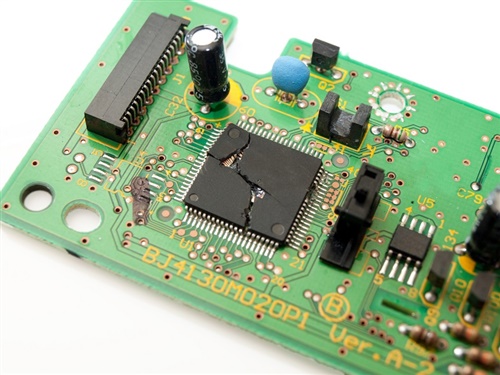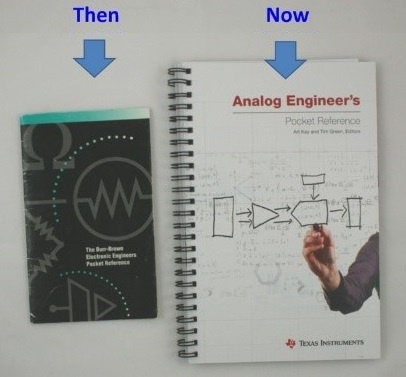SSZT884 November 2017
- 1
-
2
- 3
- 1. Magic smoke is real and you need to embrace it.
- 2. You’ll never be alone when you work in isolation.
- 3. Pease Isn’t a Typo.
- 4. Clocks Are No Good at Telling Time.
- 5. There Is a Lot of Drawing Involved for a Field This Technical.
- 6. V = IR Is Always the Answer.
- 7. Those Formulas from Engineering 101 Still Come in Handy Today.

I’m sure you’ve been asked at some point what you do for a living. For me, it is normally an odd conversation:
Them: What do you do?
Me: I work at Texas Instruments.
Them: So you make the calculators!
Me: No, actually I work in Analog.
Them: What’s an analog?
Me: Analog is when you deal with continuous signals.
Them: Why would you do something like that?
Me: Because you need to design analog circuits to process real-life voltages and currents.
Them: Why would you need to? I would just let the analog process itself.
Me: [long silence] … Just kidding, I make the calculators.
This exchange is proof that analog engineers really do deal with a subject with which many people are completely unfamiliar. We have concepts, languages and heroes that are unique to us, that set us apart and give us common ground. So in this post, I want to talk about a few things that come to mind when I think about things that only an analog engineer would understand.
1. Magic smoke is real and you need to embrace it.
- It is sealed into the component at manufacture.
- The component operates as long as the magic smoke is contained inside of the component.
- If the magic smoke is ever allowed out of the component, the component will no longer function (Figure 1).
- Much like a can of worms, you can’t put magic smoke back into the component.
Therefore, by the observed effects of magic smoke, you can conclude that it is essential to component operation. Common causes of magic smoke release include (but are not limited to) overvoltage stressing, overcurrent stressing, reversed supply, overheating or incorrect wiring.
 Figure 1 The Hermetically Sealed Smoke
Container Is Breached, Resulting in a Component That No Longer Works
Figure 1 The Hermetically Sealed Smoke
Container Is Breached, Resulting in a Component That No Longer Works2. You’ll never be alone when you work in isolation.
3. Pease Isn’t a Typo.
 Figure 2 If You Don’t Understand the
Joke, Then You Need to Spend More Time in the Lab
Figure 2 If You Don’t Understand the
Joke, Then You Need to Spend More Time in the Lab4. Clocks Are No Good at Telling Time.
5. There Is a Lot of Drawing Involved for a Field This Technical.
 Figure 3 The Secret Analog
Language
Figure 3 The Secret Analog
Language6. V = IR Is Always the Answer.
Let’s take a look at some examples of analog design that don’t require a doctorate in mathematics to solve:
- Current shunt amplifier: A 10mΩ resistor (R) is placed in line with a current up to 10A (I), and the 0-0.1V (V) is amplified and measured.
- In a precision DAC, at a 5mA (I) load the output drops by 120mV (V), meaning that the output impedance (resistance) is about 24Ω (R).
- In a motor gate driver, a MOSFET overcurrent monitor trips at 0.5V (V), meaning that a MOSFET with an on-resistance of 20mΩ (R) has an overcurrent threshold of 25 A (I).
7. Those Formulas from Engineering 101 Still Come in Handy Today.
 Figure 4 Some Things Never Change
Figure 4 Some Things Never ChangeAre There Any More Things That Only an Analog Engineer Would Understand? Comment below and Let Us Know If You Have Any Unique Experiences in Analog.